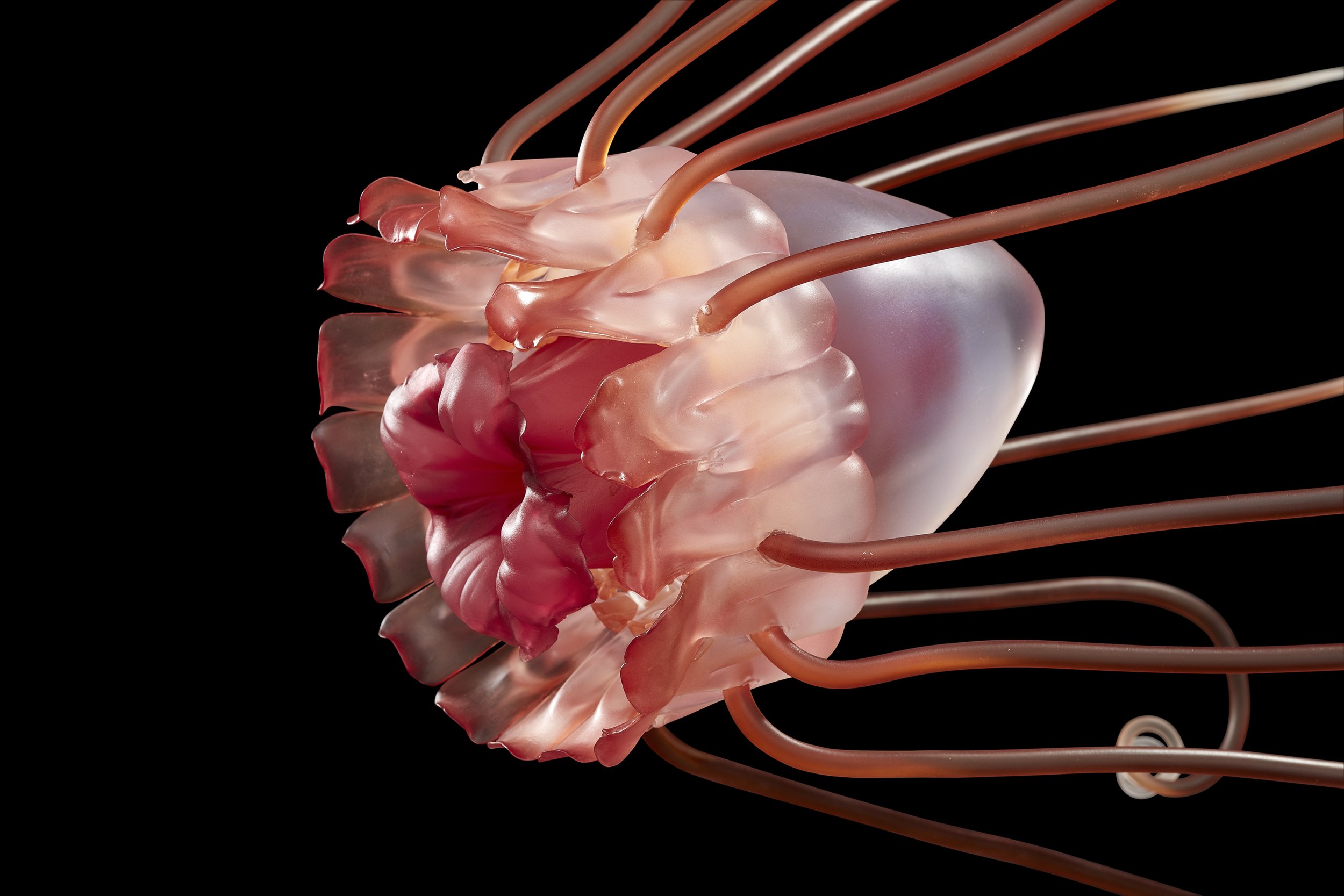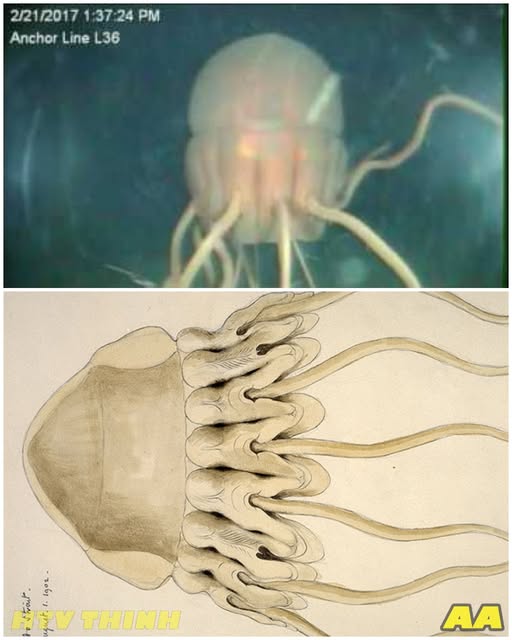 Uncovering Periphylla: The Deep-Sea Wonders That Resemble Aliens! What Scientists Are Learning About These Enigmatic Creatures Will Astound You!
Uncovering Periphylla: The Deep-Sea Wonders That Resemble Aliens! What Scientists Are Learning About These Enigmatic Creatures Will Astound You!
In the vast and largely unexplored depths of the ocean, where sunlight fails to penetrate and the pressure is crushing, an extraordinary creature known as Periphylla resides.
Commonly referred to as the “deep-sea jellyfish,” Periphylla is a member of the class Scyphozoa, which includes many of the jellyfish species we are familiar with.
However, this particular jellyfish is anything but ordinary.
With its translucent, bell-shaped body that can reach up to 40 centimeters in diameter, and its long, trailing tentacles that can extend several meters, Periphylla resembles an alien entity drifting through the dark
waters of the abyss.
What sets Periphylla apart from its more commonly known relatives is its bioluminescence.
This ability to produce light is not just a fascinating spectacle; it serves important functions in its survival.
When threatened, Periphylla can emit a stunning display of light, creating a mesmerizing effect that can confuse predators and allow it to escape.
This bioluminescent display, coupled with its ghostly appearance, has led many to draw comparisons between Periphylla and the extraterrestrial beings depicted in science fiction films.
Discovered relatively recently in the grand scheme of marine biology, Periphylla was first identified in the early 20th century.
Since then, researchers have been captivated by its unique adaptations and behaviors.

Unlike many jellyfish that inhabit shallower waters, Periphylla thrives in the deep sea, often found at depths of over 1,000 meters.
This adaptation to extreme environments raises intriguing questions about the evolutionary processes that shaped this species.
How did Periphylla develop such remarkable traits, and what can they tell us about the resilience of life in hostile conditions?
One of the most remarkable aspects of Periphylla is its diet.
Like other jellyfish, it is a carnivorous organism, primarily feeding on small fish, plankton, and other tiny marine creatures.
Its tentacles are equipped with specialized cells called cnidocytes, which contain stinging structures known as nematocysts.
These nematocysts allow Periphylla to capture and immobilize its prey, ensuring a steady food supply in the nutrient-scarce environment of the deep sea.
This predatory behavior, combined with its unique adaptations, paints a picture of a creature that has evolved to thrive in one of the most challenging ecosystems on the planet.
But the story of Periphylla does not end with its biology; it also plays a crucial role in the marine ecosystem.
As a member of the food web, Periphylla serves as both predator and prey.
Its presence in deep-sea environments contributes to the complex interactions that sustain marine life.
Additionally, the jellyfish’s bioluminescence may have implications for deep-sea communication and navigation among other marine species, highlighting the interconnectedness of life in the ocean depths.
Despite its fascinating characteristics, Periphylla remains shrouded in mystery.

Much of what we know about this creature has been gleaned from limited observations and studies.
The challenges of exploring the deep sea, with its extreme conditions and vast expanses, make it difficult for scientists to conduct comprehensive research.
However, advancements in technology, such as remotely operated vehicles (ROVs) and deep-sea submersibles, have opened new avenues for exploration.
These tools allow researchers to observe Periphylla in its natural habitat, providing valuable insights into its behavior, ecology, and adaptations.
As scientists continue to study Periphylla and other deep-sea organisms, they are uncovering important clues about the evolution of life on Earth.
The adaptations of these creatures offer a glimpse into the resilience of life in extreme environments, and studying them can inform our understanding of potential life forms on other planets.
The similarities between Periphylla and the depictions of extraterrestrial beings in popular culture serve as a reminder of the vast possibilities that exist beyond our own planet.
If life can thrive in the depths of our oceans, could it also exist in the harsh conditions of other celestial bodies?
The allure of Periphylla extends beyond its scientific significance; it captivates the imagination and challenges our perceptions of life itself.

As we continue to explore the mysteries of the deep sea, we are reminded that there is still so much to learn about the creatures that inhabit this enigmatic realm.
Each discovery brings us closer to understanding the delicate balance of marine ecosystems and the evolutionary processes that shape life on Earth.
In conclusion, Periphylla, the alien-like jellyfish of the deep, represents both the wonders and mysteries of our oceans.
Its unique adaptations, bioluminescence, and role in the marine ecosystem highlight the resilience of life in extreme environments.
As we strive to unlock the secrets of the deep sea, Periphylla serves as a symbol of the unknown, inviting us to explore further and dream bigger.
The ocean remains a frontier waiting to be discovered, and with each expedition, we inch closer to uncovering the astonishing truths that lie beneath the surface.
The story of Periphylla is just one chapter in the vast narrative of life on Earth, and as we continue to explore, who knows what other wonders await us in the depths?
